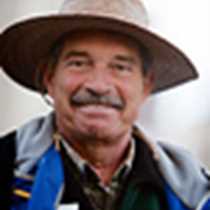Lake Eva, Hanus Bay, Southeast Alaska
Sitkoh Bay on Chichagof Island offered us a bounty this morning! Four brown bears, one of them very near our ship. This was a young animal eating rye grass at the beach, as the salmon are not yet running. Great amounts of this tall, tender and juicy grass are consumed each day, consisting of the majority of consumed food in spring and summer. We next visited a bay on Catherine Island, called Hanus Bay, and spent most of the morning there. Hikes were organized, as well as kayak groups. Some of the hikes were to farther away points such as Lake Eva itself and a surprising old-growth forest somewhat beyond this first point, where they measured the circumference of the giant Sitka spruce trees by holding arms together. Other hikes were shorter and special for birders. Many species of birds were sighted and heard, such as wrens, thrushes, hummingbirds, eagles, common mergansers and the red-breasted sapsucker hawking insects in mid-air. At this time of year a good number of plants are flowering, and the shooting stars, the red elderberry, early blue and yellow violets and many others never failed to warm our hearts. Red squirrels ran into their underground burrows among their spruce-cone middens, and in the outflow river of the lake, a few early salmon considered that stream as their breeding grounds, beginning their adaptation to fresh water for the rapidly approaching running season.
Kayakers marveled at the lovely and fresh scenery inside the first lagoon of this solitary river, where a number of common mergansers were seen.
After lunch we sailed on out of this bay, and almost immediately met a series of humpback whales, which we followed and watched for some time. Lunges, half-breaches and blows delighted us endlessly. And yet on we travelled, now northwest up and around Peril Strait, to the Russian capital of Alaska, Sitka, then called New Archangel, on the island of Baranof. It was in Peril Strait where, in 1799, Alexander Baranof lost 150 Aleut Indians and some Russians to "poisonous mussels," very probably PSP or Paralytic Shellfish Poisoning. And in a small bay of this island we anchored to rest for the night.
Sitkoh Bay on Chichagof Island offered us a bounty this morning! Four brown bears, one of them very near our ship. This was a young animal eating rye grass at the beach, as the salmon are not yet running. Great amounts of this tall, tender and juicy grass are consumed each day, consisting of the majority of consumed food in spring and summer. We next visited a bay on Catherine Island, called Hanus Bay, and spent most of the morning there. Hikes were organized, as well as kayak groups. Some of the hikes were to farther away points such as Lake Eva itself and a surprising old-growth forest somewhat beyond this first point, where they measured the circumference of the giant Sitka spruce trees by holding arms together. Other hikes were shorter and special for birders. Many species of birds were sighted and heard, such as wrens, thrushes, hummingbirds, eagles, common mergansers and the red-breasted sapsucker hawking insects in mid-air. At this time of year a good number of plants are flowering, and the shooting stars, the red elderberry, early blue and yellow violets and many others never failed to warm our hearts. Red squirrels ran into their underground burrows among their spruce-cone middens, and in the outflow river of the lake, a few early salmon considered that stream as their breeding grounds, beginning their adaptation to fresh water for the rapidly approaching running season.
Kayakers marveled at the lovely and fresh scenery inside the first lagoon of this solitary river, where a number of common mergansers were seen.
After lunch we sailed on out of this bay, and almost immediately met a series of humpback whales, which we followed and watched for some time. Lunges, half-breaches and blows delighted us endlessly. And yet on we travelled, now northwest up and around Peril Strait, to the Russian capital of Alaska, Sitka, then called New Archangel, on the island of Baranof. It was in Peril Strait where, in 1799, Alexander Baranof lost 150 Aleut Indians and some Russians to "poisonous mussels," very probably PSP or Paralytic Shellfish Poisoning. And in a small bay of this island we anchored to rest for the night.




